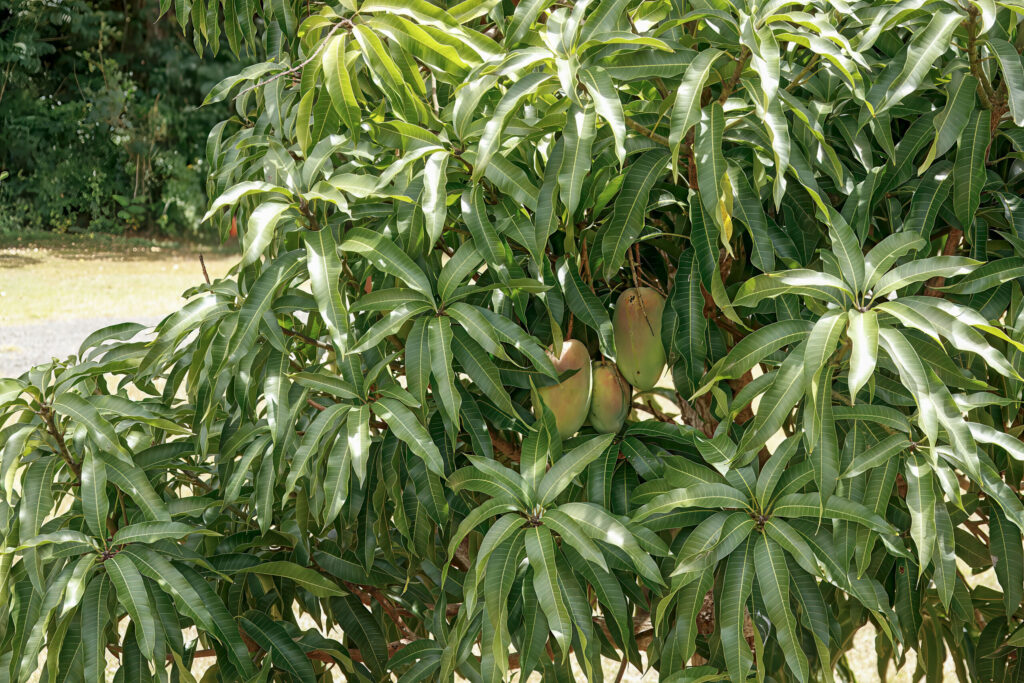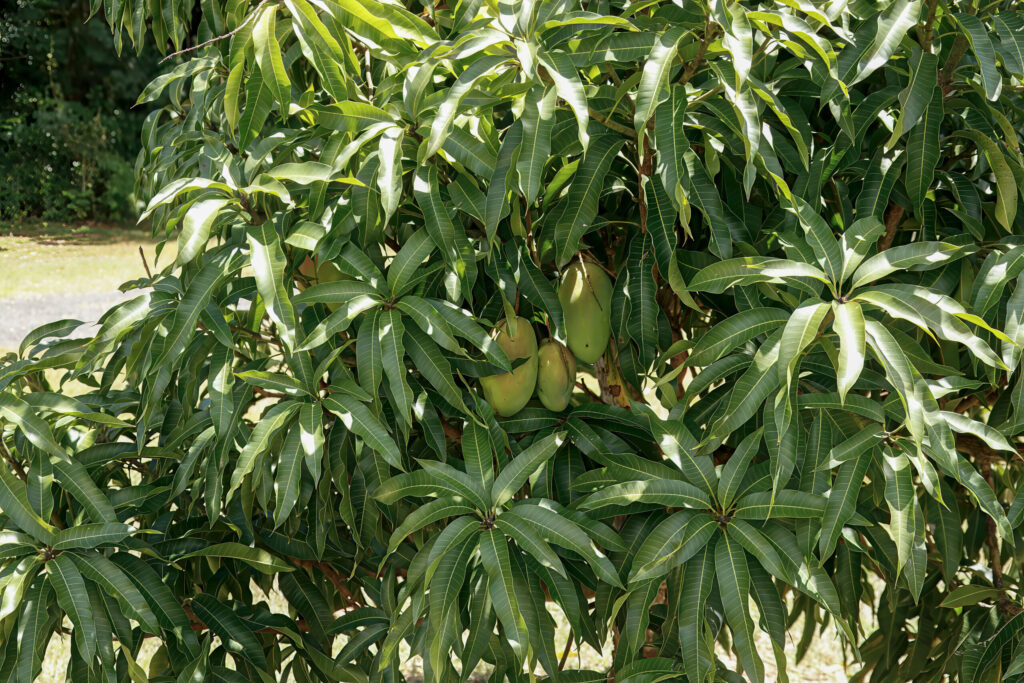Cogshall Mango
Scientific name: Mangifera indica “Cogshall”
GPS Location: 17° 42′ 53.29″ N, 64° 49′ 50.95″ W







Observations:
Phenological Markers: Mangifera indica ‘Cogshall’ (Cogshall Mango)
Scientific Name: Mangifera indica ‘Cogshall’
Common Name: Cogshall Mango
Family: Anacardiaceae (Cashew family)
Cultivar Origin: Originally from Florida, USA
Status in the Virgin Islands: Introduced cultivar; occasionally found in private gardens and tropical orchards
🌳 Tree Characteristics
- Height: Typically maintained at 3–4.5 meters (10–15 feet) with pruning
- Growth Habit: Compact, upright tree with symmetrical, dense foliage
- Leaves: Long, leathery, and lanceolate; reddish when young, maturing to dark green
- Flowers: Tiny, pinkish-white flowers borne in large, branched panicles
- Fruit: Oval to oblong mango with smooth yellow skin blushed red when ripe; fiberless flesh, deep orange, rich and sweet flavor
📆 Phenological Markers
Spring (March–May)
- Flowering Peak: Profuse panicle flowering begins in early spring; each panicle bears hundreds of tiny flowers
- Pollination: High insect activity (especially bees and flies) during flowering
- Leaf Flush: Young reddish leaves emerge and mature to green, often during or just after flowering
Summer (June–August)
- Fruit Development: Small green fruits set and begin rapid growth
- Fruit Ripening: Ripening typically occurs mid to late summer; fruit turns yellow-red and becomes fragrant
- Harvest Period: Usually July–August in the Caribbean; fruits ripen gradually over several weeks
Fall (September–November)
- Post-Harvest Recovery: Leaf growth may continue; little flowering or fruit activity
- Canopy Management: Ideal time for light pruning to maintain shape and encourage airflow
Winter (December–February)
- Dormant Phase: Slower growth; minimal flowering except in warm winters
- Pre-Bloom Activity: Bud swell may begin toward late February in early-flowering years
👁️ Observation Tips
- Young Leaves: Easily visible due to bright red color; good indicator of active growth phase
- Flowers: Observe flower panicles for color changes, insect visitors, and early fruit set
- Fruit Signs: Watch for subtle color change from green to yellow or red as ripening begins; sniff for sweet aroma near harvest
- Mature Fruit Drop: Ripe fruits often fall naturally—check under canopy during peak season
🌿 Ecological and Cultural Notes
- Ecological Role:
- Provides nectar for bees and other pollinators
- Offers dense foliage for bird nesting and shade
- Cultural/Edible Use:
- Highly prized for its fiberless, sweet, aromatic fruit
- Suitable for home gardens due to compact growth and excellent fruit quality
- Often eaten fresh, in chutneys, or frozen for smoothies
⚠️ Cultivation & Conservation Notes
- Disease Susceptibility: Generally more resistant to anthracnose than other mangoes, but still vulnerable to fungal issues in humid areas
- Care: Benefits from pruning and airflow management; prefers full sun and well-drained soils
- Propagation: Usually propagated by grafting to preserve cultivar traits
